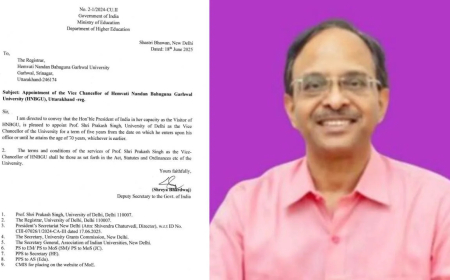The Prophesied Return of The Divine Presence, Kalki : Understanding the bhavishya malika and Teachings of Sant Haridas
This article delves into the profound teachings of Sant Haridas, highlighting his prophecies regarding the divine return during the Kali Yuga and the anticipated role of various spiritual figures. The content serves as a guide for devotees to remain vigilant and spiritually awakened.

In the rich tapestry of spiritual narratives within Indian tradition, the teachings of Sant Haridas emerge as a compelling guide for understanding the divine cycles of existence. Through his prophecies, the Sant offers insights into the Kali Yuga, a period characterized by spiritual decline and moral ambiguity. His words resonate deeply with devotees, urging them to remain alert and spiritually equipped to recognize the signs of divine intervention.
The Context of Kali Yuga
Kali Yuga, known as the last of the four stages the world goes through as part of the cycle of Yugas, brings about the decay of values and the prevalence of ignorance. In this context, Sant Haridas’s proclamations provide a timely reminder of the need for faith and vigilance among followers of dharma. His teachings underscore the inevitability of divine incarnations when righteousness wanes, suggesting that even in the midst of chaos, there lies the promise of salvation.
The Birth of the Divine
One key aspect of Sant Haridas's prophecies involves the notion of divine birth. He identifies a symbolic “Kalatparvat,” which is interpreted as a metaphysical peak from which the divine will manifest. This leads to the assertion that the divine presence, personified in the form of a Mahapurush (great person), will come forth to restore dharma. This significant event is heralded by spiritual leaders who will emerge from the northern regions of India, particularly the Himalayas, to announce the advent of the Lord.
This prophecy has two critical implications. First, it invites devotees to prepare spiritually for the moment of divine arrival. Second, it establishes the need for a collective awakening, encouraging individuals to evaluate their spiritual paths and align with the principles of righteousness.
The Mirror Analogy
A fascinating element in Sant Haridas’s teachings is the use of the mirror analogy—a metaphor for self-realization and introspection. The analogy emphasizes that just as a mirror reflects one's true self, the spiritual practices and efforts of individuals will ultimately be revealed to them in the light of divine grace.
In this context, the divine figure embodies the eternal witness, capable of uncovering the spiritual history and journey of each seeker. Sant Haridas asserts that all devotees, regardless of their spiritual status, will eventually find themselves in the presence of this divine figure who serves as both a guide and a judge of merit. Through this transformative experience, devotees are encouraged to reflect on their own lives and intentions, seeking clarity in their quest for communion with the divine.
The Divine Kingship
Another profound theme in Sant Haridas’s prophecies concerns the idea of divine kingship. The "Divya Singh Sut," or divine lion son, signifies a ruler with divine qualities who will emerge to safeguard the righteous and punish the wicked. This metaphor illustrates the dual role of the divine presence in governance—providing protection and benevolence to the devotees while addressing injustice and moral decay.
This imagery is also reminiscent of the Jagannath temples, where the deities embody the principles of divine kingship within the frame of everyday existence. The reference to Jagannath connects the prophecies to practical spirituality, rooting lofty ideals in the daily lives of devotees and emphasizing their role in nurturing dharmic principles in society.
Signs of Divine Arrival
As the narrative unfolds, Sant Haridas describes vivid signs that will accompany the divine return. Notable among these indicators is the vision of the earth appearing as a haze, signaling the arrival of the Lord. This imagery serves not only as a literal sign but as a metaphorical reminder to the seekers of spiritual truth that the divine presence often cloaks itself within the veils of reality.
Adherents are encouraged to pay heed to these signs, fostering an attitude of reverence and receptivity. The teaching highlights a spiritual urgency—an invitation for devotees to engage deeply with their practices, nurturing their faith as they await the culmination of divine cycles.
Spiritual Awakening and Responsibility
The overarching message from Sant Haridas is one of spiritual awakening. The Sant implores his followers to remain vigilant, stating that if they lose sight of their spiritual paths, they risk missing the divine manifestation entirely. This insistence on preparedness underscores the personal responsibility each individual holds in their spiritual journey and the collective responsibility of the community to support and uplift one another.
As the world experiences moral failing and chaos, Sant Haridas’s discourse invites followers to protect their spiritual integrity through Bhakti (devotion) and by upholding dharmic truths. The focus returns to internal cultivation—encouraging practitioners not to become complacent but to actively engage with their spiritual disciplines.
The teachings of Sant Haridas serve as a timeless reminder that amidst the tumultuous waves of Kali Yuga, opportunities for divine connection remain ever-present. By recognizing the signs, reflecting on their inner selves, and actively engaging with their spiritual practices, devotees can navigate the complexities of existence. The hope of divine birth and intervention is not just an abstract concept but a living call to action, urging all to embrace their spiritual paths with fervor and dedication.
In embracing this wisdom, followers of Sant Haridas look forward to the return of divine grace, ready to participate in the unfolding of cosmic narratives that shape our lives and the world around us. Thus, the teachings of the Sant resonate as a beacon of hope for achieving spiritual liberation, even in the darkest times.































































